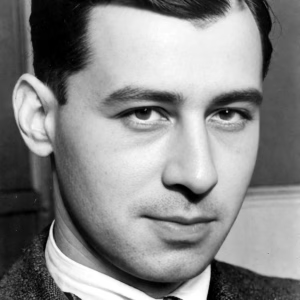
Cyril Kornbluth (July 2, 1923–March 21, 1958) was born in New York City, a cultural landscape already teeming with the anxieties that would later fuel his fiction. Kornbluth is often known by the initials “C. M.,” but according to colleague and collaborator Frederik Pohl, he never actually had a middle name. It has been suggested the “M” might have been added as a tribute to his wife, Mary Byers.
His early life, marked by a voracious appetite for pulp magazines and a keen observational eye, laid the foundation for a career spent dissecting postwar society and human behavior through the lens of speculative fiction. Though he tragically died young, at only 34, Kornbluth left an indelible mark on the genre, influencing generations of writers with his sharp wit, cynical realism, and unsettlingly prescient social commentary.
Kornbluth’s path wasn’t a straightforward ascent to literary acclaim. He began writing professionally in his teens, churning out stories for the pulp market under numerous pseudonyms, sometimes in collaboration with other rising writers of the era—a necessity born from a desire to experiment with different styles. This early period honed his craft, teaching him the mechanics of storytelling and the demands of a fast-paced industry. However, it was his later work, particularly during the 1950s, that established him as a major voice in science fiction.
He emerged at a time when the genre was undergoing a transformation. The optimistic visions of space exploration and technological progress championed by authors like Robert A. Heinlein were beginning to be challenged by a growing sense of unease about the Cold War, conformity, and the potential for societal collapse. Kornbluth didn’t offer escapism; he offered a mirror, reflecting back the anxieties of his time with ruthless clarity. His style was characterized by a deliberately unromantic tone, often employing sardonic humor and a matter-of-fact prose that heightened the impact of his dystopian themes. Where Heinlein built worlds to inspire, Kornbluth constructed cautionary tales.
The Marching Morons, published in 1951, stands as a particularly potent example of this approach. The story’s seemingly absurd premise—a future where humanity has bred itself into near-total idiocy, with only a handful of intelligent individuals struggling to maintain civilization—served as a scathing critique of unchecked population growth and the dangers of valuing quantity over quality. It was a bold statement that resonated deeply with readers grappling with post-war anxieties about societal decline and the potential for intellectual stagnation.
Kornbluth’s influence extended beyond individual works. He helped popularize the concept of “social science fiction,” focusing on the political, economic, and psychological consequences of technological advancements. Authors like Philip K. Dick, known for his own explorations of paranoia and social control, acknowledged Kornbluth as a significant inspiration. His willingness to tackle complex issues with unflinching honesty paved the way for a more sophisticated and politically engaged form of science fiction.
Though he never achieved widespread mainstream recognition during his lifetime, C. M. Kornbluth’s legacy continues to grow. He remains a vital voice in the genre, a prophet of the mundane apocalypse who understood that the greatest threats to humanity often come not from alien invaders or futuristic technology, but from ourselves. His work serves as a stark reminder that progress is not guaranteed and that vigilance—tempered by a sharp wit and necessary cynicism—is essential for navigating an increasingly complex world.